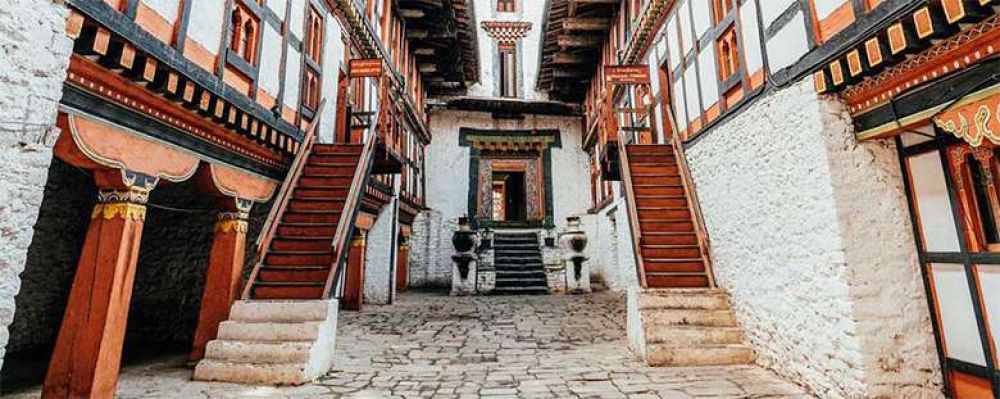

Jakar Dzong, also known as the "Castle of the White Bird," stands as a testament to Bhutan's rich history and its significance within the realm of Bhutanese culture. Situated atop a ridge in the Chokhor Valley of Bumthang, Jakar Dzong has played a pivotal role in the history of the region, serving as both a defensive fortress and a center for spiritual learning.
The history of tourism in Bhutan, with a particular focus on landmarks like Jakar Dzong, is relatively modern. Bhutan cautiously opened its doors to foreign visitors in 1974 in an attempt to increase revenue and promote Bhutanese culture. Since then, the country has followed a strict policy of "High Value, Low Impact" tourism to protect its environment and culture from the heavy footfalls of mass tourism.
Jakar Dzong itself became an important tourist attraction as visitors sought to explore the unique architecture and sacred heritage of Bhutan. Over the years, the dzong has continued to captivate tourists with its majestic structure, strategic location, and the panoramic views of the valley it offers.
The dzong's historical significance dates back to its founding in 1549 by the Tibetan Lama Ngagi Wangchuk. Later, the structure played a crucial role in defending the region against Tibetan invasions.
Additionally, Jakar Dzong is revered as a spiritual site. It is said that when a group of lamas were in search of a site for a new monastery, a white bird emerged and sat on the hill where the dzong is now located, an auspicious sign leading to the construction of the fortress-monastery.
In recent years, Bhutan's targeted approach to tourism has seen the rise of sustainable and eco-friendly travel experiences. Visitors are increasingly seeking authentic interactions with local culture, history, and nature, which includes excursions to culturally significant sites such as Jakar Dzong.
Community-based tourism is also on the rise, where tourists get to experience local Bhutanese life in the villages surrounding Jakar. This has added to the dzong's allure as a destination, giving visitors a more holistic understanding of Bhutanese culture and heritage.
To preserve the integrity of such historical sites, the Bhutanese government has implemented measures to control the numbers and impact of tourists, ensuring that landmarks like Jakar Dzong can be enjoyed for generations to come in a sustainable manner.
For those looking to explore the spiritual heart of Bhutan, a visit to Jakar Dzong is an absolute must. It offers a blend of Bhutan's past and present, wrapped in the stunning natural beauty of the Bumthang Valley.
Accessibility: Jakar Dzong is accessible by road and is a part of the itinerary for most cultural tours in Bhutan. To visit, tourists must book their trip through a registered Bhutanese tour operator and obtain the necessary permits as part of the country's tourism policy.
Whether you're a history buff, a spiritual seeker, or an admirer of architectural marvels, Jakar Dzong promises an unforgettable addition to your Bhutanese adventure.